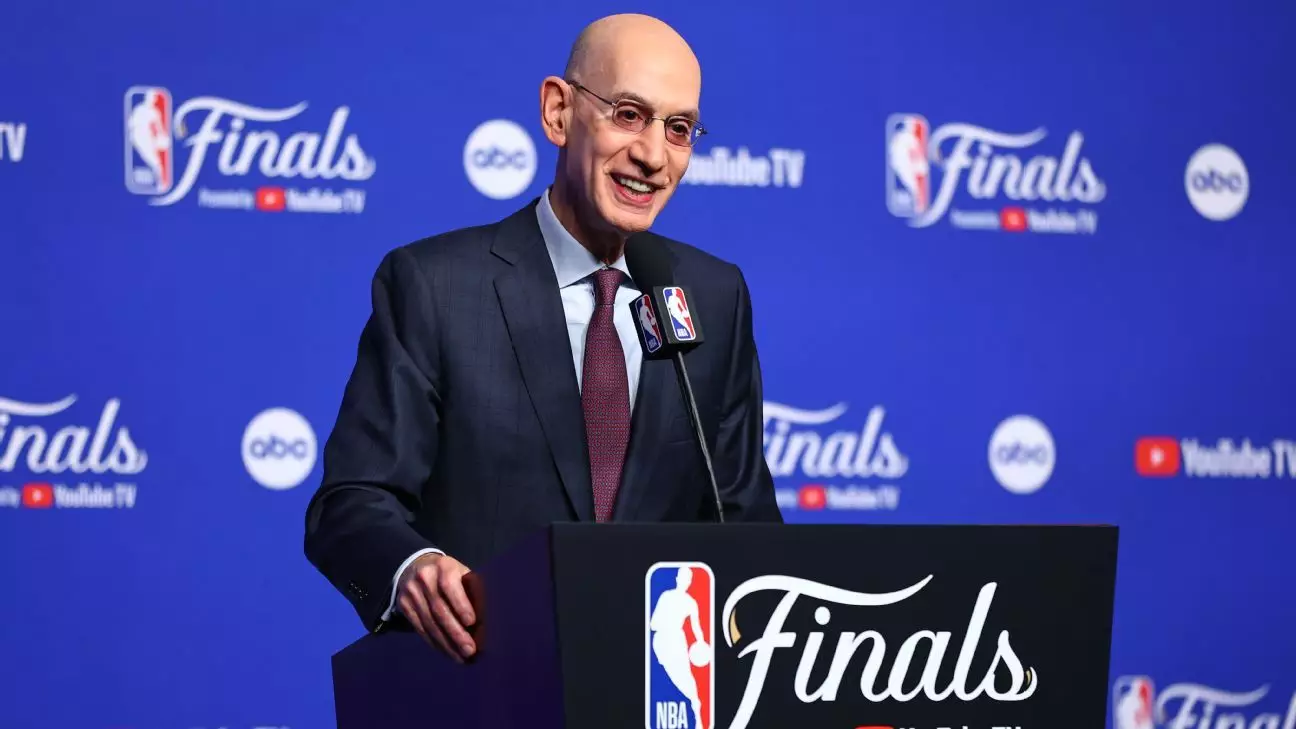The NBA is on the verge of a transformative chapter as discussions surrounding expansion take center stage at the upcoming board of governors meeting in Las Vegas. NBA Commissioner Adam Silver has indicated that the topic will be formally addressed, marking a significant shift since the league last welcomed new franchises in 2004. Interest has surged not just from the league’s owners but also from various potential markets clamoring for the chance to showcase their passion for basketball. This moment signifies more than just a business decision; it reflects a unique blend of vision, equity, and understanding of market dynamics.
Understanding Market Potential
Silver’s openness about engaging with outside advisers to analyze market viability highlights the importance of grounding NBA expansion in thorough research. As he pointed out, there exist underserved markets across the United States and abroad that deserve representation at the NBA level. Places like Seattle and Las Vegas have emerged as frontrunners, each with a well-developed basketball culture and a longing for a franchise to call their own. The revitalization of these basketball-loving markets could not only breathe new life into the league but also touch countless fans and communities yearning to embrace the NBA era.
However, this expansion entails weighing the balance between growth and maintaining equity within the league. Silver rightly noted that adding new partners translates to selling equity in the NBA. This brings forth the critical question of what the league desires for its future—adding teams to broaden its reach or preserving an exclusive club of owners that believe in the league’s long-term potential.
The Challenge of Parity
One of the most exciting aspects of modern basketball is the emergence of varied champions, with this year’s NBA Finals set to crown the seventh consecutive first-time champion. While numerous factors contribute to this phenomenon—most notably, alterations fostered through the collective bargaining agreement—Silver’s focus remains on creating a level playing field for all franchises. He believes that fostering parity is essential for preserving competitive excitement.
Silver described franchises like the Oklahoma City Thunder and Indiana Pacers as exemplary models of successful management, proving that a well-run organization can overcome odds and create a lasting legacy. It’s intriguing to ponder whether an expanded league would help or hinder this developing narrative. Would new teams bring fresh competition, or would some markets struggle to compete with established giants?
A Changing All-Star Game
Another key topic Silver addressed was the potential metamorphosis of the NBA All-Star Game. The shift toward a Team USA vs. the World format resonates not only with the increased presence of international talent in the league, but also aligns the NBA more closely with global sporting narratives. However, the complexities inherent to forming this model present challenges that the league is still working to refine. Balancing the proportions of American and international players will be pivotal in ensuring an exciting and representative event.
Ultimately, the All-Star Game should serve as a celebration of basketball while embracing national pride. Given that the game will air on NBC in conjunction with the Winter Olympics, it provides a unique opportunity to blend festivities from both worlds, as the league seeks to capitalize on the international narrative that resonates with fans.
Resisting the Temptation to Reduce Game Count
In an era where player health is prioritized, some have suggested reducing the NBA’s 82-game regular season as a potential remedy to injuries. Silver dismissed this idea, emphasizing the lack of data supporting the assertion that fewer games would translate to better health outcomes for players. The notion that injuries would worsen during different seasons lacks empirical backing; hence, the prospect of shortening the schedule, while appealing to some, does not hold water based on existing evidence.
This decision underscores a broader sentiment that the NBA remains committed to its established format for the time being. Rather than chasing immediate convenience, the league must look toward long-term health strategies. As franchises and players adapt to an ever-changing landscape, a robust regular season remains an integral component of what makes the NBA a thrilling spectacle for fans.
As discussions around expansion gain momentum, it’s crucial for all stakeholders to approach the future with ambition and caution. The evolution of the league can usher in unprecedented opportunities while ensuring that the spirit of basketball remains unwavering in its pursuit of excellence.


Leave a Reply